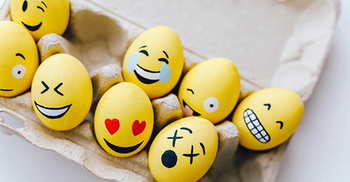Is it possible to digital detox anymore?

In February, news broke that Salesforce CEO Marc Benioff had taken a ‘digital detox’: 10 tech-free days at a French Polynesian resort. For a small group of people, taking a step back from devices is an achievable dream – but for most, it’s an impossibility, especially now.
A digital detox requires shelving technology almost entirely: taking a break from screens, social media and video conferences for multiple days. The goals – reducing stress or anxiety, and reconnecting with the physical world – are well-intentioned. And although there aren’t scientifically proven benefits from periods of tech abstinence, that hasn’t stopped the digital detox from becoming a coveted challenge.
But that challenge has become far harder to accomplish since 2012, when researchers first used the term. Screens were already important then, even with nascent versions of apps and social media. Yet attempting a digital detox in 2012 would have been a cake walk compared to now, when more than ever, our lives are impossible to detangle from technology. We pay with our phones at stores, work on our computers and tablets and maintain relationships through apps. And since the pandemic, our life-tech connection has intensified even further.
A digital detox in 2023: where would you even start?
Short of running to the remote wilderness for a few phone-free days, experts say a digital detox isn’t feasible anymore for most people.
“Technology is very much a part of us now. We bank with an app, read restaurant menus on phones and even sweat with exercise instructors through a screen,” says Seattle-based consultant Emily Cherkin, who specialises in screen-time management. “It’s so embedded in our lives, we’re setting ourselves up for failure if we say we’re going to go phone-free for a week.”
As people become increasingly interdependent on technology, doing a digital detox no longer seems like a reasonable goal. But there may be a more realistic solution that will lessen our tech obsession, without forcing us to totally disconnect.
Screens, screens, screens
As much time as people already spent on their devices, the pandemic intensified screen time. People stared at screens more during lockdown, especially in lieu of other ways to connect. But those habits haven’t ended, even as people are free to leave their homes and socialise.
A 2022 University of Leeds study showed that 54% of British adults use screens more often now than they did before the pandemic – half of those surveyed look at screens for 11 hours or more each day. Fifty-one percent are on screens more for leisure than they were pre-pandemic, while 27% have increased screen use at work.
This increase in screen time has also changed how we connect with each other. Critical relationships have become more digitised, as we’ve built communities in WhatsApp groups, substituted bi-monthly family meals for weekly FaceTime calls and more. Covid-19 forced many of our connections into the digital realm, and many of those continue to exist in these tech environments, like group chats and video calls. That means a digital detox isn’t only about getting a breather from mundane Slack chats with your boss – it would also mean cutting ties with your nearest and dearest for a period of time.
As online dating has grown more prevalent – and indeed grew during the pandemic – technology has also become central to making friends. According to Bumble data, seen by BBC Worklife, the dating app’s friendship matchmaking spinoff Bumble BFF has seen a substantial increase in traffic since 2020. By the end of 2021, almost 15% of Bumble’s 42 million users were also searching for friends on BFF, up from less than 10% a year earlier. And, by the end of 2022, male pursuers were up another 26%.
“A lot of technology right now, for better or worse, is a form of accessibility,” says writer Chris Dancy, who monitors his own connected existence with more than 700 sensors, devices and apps. “For many children, for many parents, for many partners, for many friends – I hate to say it, but they’ve forgotten how to navigate relationships without it.”
A shift in perspective
The combined shift to hybrid work and hybrid relationships makes the traditional idea of digital detox not just outdated, but nearly impossible. Digital detoxes are touted as an anxiety-relieving panacea that will pull people away from distracting screens, and reconnect them with the present moment. But as people’s lives and screens are more inextricable than ever, the idealisation of disconnection may end up causing more anxiety when you can’t achieve it.
“I can’t shut down technology. We are on screens for so many different reasons,” says Sina Joneidy, a senior lecturer in digital enterprise at Teeside University, UK. He takes a different approach. “For me, it’s more about detoxing from the 'desirous attachment’ to technology.” Joneidy, who’s a Buddhist, explains that ‘desirous attachment’ is when a person wants something because they believe it will bring then happiness – when actually, in this case, it’s just a blue light dopamine hit.
Rather than cutting out technology altogether, Joneidy practices digital mindfulness. “I make sure my use of technology is purposeful,” he says. Digital mindfulness may be more practical for some people, in lieu of a full detox: less worry about cutting tech out entirely, and more focus on being intentional with its use. Instead of being seduced by the addictive, mindless scroll, Joneidy believes digitally mindful users can enhance their lives with tech, rather than feeling like they’re tethered to a device.
Even if people can’t walk away from screens entirely, paying attention to specific tech-use patterns, say experts, may help them use technology more intentionally. “I started using lots of different tracking tools on my phone,” says Oregon-based anthropologist Amber Case. She realised she was clicking on Instagram 80 times a day, so she downloaded One Sec, a plugin that makes users take a deep breath before they can open and access the apps on their phone. It forces the user to take a moment before they log on and helps pull them out of autopilot mode.
Case also recommends getting out of the habit of scrolling through your phone as a break, and suggests that it can be helpful to leave your phone elsewhere when you don’t need it. “People will dip into their phone like they’d dip into a cigarette,” says Case. “They’re occupying what could be empty time and filling it with other people’s ideas.” Instead, she says, rest by staring into space, allow yourself to be bored for a minute.
Ultimately, say experts, the goal shouldn’t be to cut off technology, full stop – or internalise the pressure to do so. People still need to send an email or dash off a text, but can do so without getting distracted by the various wormholes of online content.
Dancy calls this approach “grey detoxing” – you’re not totally immersed or totally cut off from technology. And there isn’t just one way to about the practice: his techniques including installing an app or plug-in to remove all metrics from social media, or even trading phones with loved ones, so you can use your screens as a way to intentionally connect with each other. “Every weekend I use my husband’s phone and he uses mine,” says Dancy. They reply to each other’s messages, listen to music through each other’s accounts. “It’s a way of actually becoming immersed in their life,” says Dancy. That is to say, their digital, often private, life.
The digital detox of 2012 may be outdated if you’re not a billionaire, but that doesn’t mean we are doomed to mindlessly scroll through the rest of our lives. Instead of causing ourselves more anxiety by attempting to live without our phones for a week, we can approach unavoidable screen time in a way that feels right for our individual lives – no Polynesian retreat necessary.
Source: BBC





